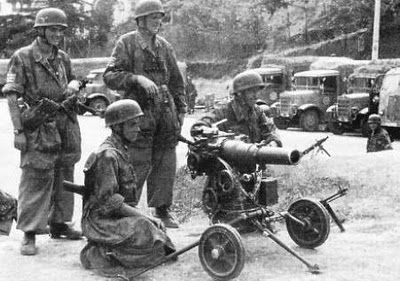| Year | 1941 |
| Weapon Type | Light Recoilless Gun |
| Origin & Designer | Germany/Rheinmetall |
| Numbers Produced | 450 |
| Crew | 3 |
| Calibre | 75mm (75x130 HE & 75x200 AP) |
| Elevation | -15° to +42° |
| Traverse | 60° or 360° (Depending on Elevation) |
| Breech | Horizontal Sliding Block |
| Recoil | [@recoil] |
| Gun Sight | Rbl.F.40 |
| Gun Mount | Three Tubular Legs |
| Carriage | Twin Wheeled / Split Trail |
| Trailers | [@trailers] |
| Gun Shield | [@gun_shield] |
| Armoured Plate | [@armoured_plate] |
| Barrel Length | 458mm (L/15.5) |
| Overall Length | 1.14m |
| Width | [@width] |
| Height | [@height] |
| Weight | 145 kg (In Action) |
| Round Weight | 5.75 kg (HE) 4.40 kg (HEAT) |
| Muzzle Velocity | 350 m/s |
| Feed | [@feed] |
| Magazine Capacity | [@magazine_capacity] |
| Practical Rate of Fire | [@practical_rate_of_fire] |
| Rate of Fire | 6 r.p.m. |
| Maximum Rate of Fire | [@maximum_rate_of_fire] |
| Maximum Ceiling | [@maximum_ceiling] |
| Maximum Ground Range | [@maximum_ground_range] |
| Maximum Range | 6.800m |
| Armour Penetration | 75mm @ 500m @ 30° |
| Traction | Pack (Four Loads) |
| Variants | [@variants] |
| Notes | The 75mm LG40 was first used in action during the German invasion of Crete were it was issued to two Fallschirmjäger artillery batteries. It was built using light alloys which meant that it was light, compact and could be quickly brought into use by a trained crew. Like all German recoilless weapons it used conventional ammunition and it fired the same HE round as the 75mm IG18 and AP round as the 75mm FK16. It served right through the war and issued to various light units including Fallschirmjäger, Gebirgsjäger and even regular army. |
